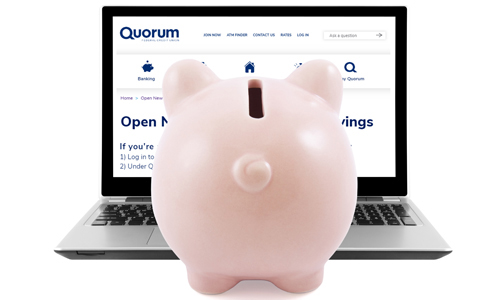Whenever your news feed says that the Federal Reserve has raised interest rates or lowered them, you probably wonder exactly what that means for you. The short answer: It will get more expensive to borrow money when you hear that the Federal Reserve has raised rates and less expensive when it has lowered them.
Although that brief explanation likely confirms your instincts, it’s worth it to understand the bigger, more nuanced picture because it will increase your financial literacy. And that empowers you to make smarter money decisions.
What is the Federal Reserve?
The United States’ central bank is officially called the Board of Governors of the Federal Reserve System. Most people simply refer to it as the Federal Reserve (or the Fed for short).
One of the Fed’s responsibilities is managing key aspects of the economy for stability, including the unemployment rate and consumer prices. As part of that role, the Fed sets a target for the federal funds rate. This is the interest rate that banks charge each other when lending overnight (banks lend funds to each other at the end of the day so they can maintain an appropriate amount of cash on hand or meet reserve requirements). These overnight rates ultimately trickle down to consumer and business borrowing. So, in reality, the Fed doesn’t increase or lower interest rates; rather, it raises or lowers its target for the federal funds rate, which eventually works its way through the economy to you in one way or another.
When does the Fed change its target for the Federal Funds Rate?
During a recession, meaning economic growth is declining over an extended period of time, the Fed often tries to spark fresh growth by lowering its target for the federal funds rate to make it cheaper to borrow money. A less expensive borrowing atmosphere encourages people to take out loans to buy a house or car or to start a new business or grow an existing one. These actions are designed to help pump up the economy and ease us out of a recession.
When the economy is growing too fast it can lead to inflation, which means the price of consumer goods and services are rising over an extended period of time. In that case, the Fed attempts to tamp down the runaway growth by making it more expensive to borrow money, so it raises its target for the federal funds rate.
How do changes in the Federal Funds Rate impact your loans?
Banks and credit unions use the existing federal funds rate to set their own prime rate, the interest rate they charge their most creditworthy customers, i.e., those with the highest credit scores. The prime rate can be directly tied to many common debt types, so a change in the federal funds rate can impact you if you fall into any of these categories:
- Credit Card Holders: Many credit cards charge a variable annual percentage rate (APR) that is the issuer’s prime rate plus a certain percentage. So, when the federal funds rate increases, it’s likely the prime rate tied to your credit card APR will also go up some time thereafter.
- Auto, Personal and Student Loan Borrowers: These types of installment loans are also typically tied to the prime rate, so anyone interested in applying for one will likely see higher interest rates offered if the Fed has increased its target. If you already have one of these loans with a fixed rate, you’re interest rate is set for the duration of your loan and you won’t experience the up or down adjustment that someone with a variable-rate loan will.
- HELOC borrowers: The prime rate is also used as the basis for most interest rates on home equity lines of credit (HELOCs). So, if the federal funds rate goes up or down, your HELOC’s interest rate will likely follow suit.
Mortgage interest rates are typically driven by a longer-term outlook of the economy influenced by many of the same factors that cause the Fed to change the federal funds rate. These factors include unemployment, inflation, the bond market and overall conditions of the economy and housing market. Because of this longer-term outlook, the average time borrowers take to move, refinance or pay off their loans, mortgages rates tend to align better with the 10-year treasury yield (the return on a 10-year U.S. Treasury Note). While mortgage rates move independently of the federal funds rate, they typically move in the same direction. Here’s how you could be impacted:
- Existing Homeowners: Your monthly payment won’t change if you have a fixed-rate mortgage. With an adjustable-rate mortgage, you could ultimately see your monthly payment move in the same direction as the federal funds rate change.
- Prospective Homebuyers: If you’re in the market for a new home, or considering a refinance, you’ll probably see the going interest rates eventually rise or fall in concert with a federal funds rate change.
How do changes in the Federal Funds Rate impact your savings?
The interest that you earn on your savings or term (similar to a CD) account generally moves in the same direction as Fed target rate changes, but often takes a bit longer to occur and can depend on the features and benefits tied to the account [In good news, however, The New York Times recently posted an article which stated smaller banks and online banks tend to pay better rates more quickly than larger institutions]. However, there are other factors that determine how quickly or how much your bank or credit union changes your savings rate. Every financial institution has a different savings strategy in setting rates they offer, which will impact the speed of rates changes in concern with federal funds moving up or down. For example, a large national bank may not need to add new deposit customers at the moment; and/or other attributes of the account, cost the financial institution money, such as no fees or minimum balance amounts. You can always check with your bank or credit union to find out its current savings rate.
When is the next Fed rate change?
Federal rate changes occur during one of the eight regularly scheduled meetings during the year (or in a special meeting, as needed), by its monetary policy-making body, the Federal Open Market Committee (FOMC). On March 20, 2024 the Fed held interest rates steady at 5.25% and 5.5%, the highest level since March 2001.
The 2024 FOMC calendar is here, with the next scheduled meeting taking place on April 30 – May 1, 2024.
A Summary of Economic Projections is released each quarter (here is March 2024, with the next projection available in June), after the FOMC meeting, and collects projections by individual FOMC participants on economic growth, unemployment, inflation, and interest rates. Interest-rate projections for current and future years are recorded for each member and charted onto a “dot plot,” which is watched closely by investors and economists for indications on the future of the federal funds rate, or, more simply, if interest rates will go up or down.
If you found this article helpful (or still have questions), let us know in the comments!






Comments Section
Please note: Comments are not monitored for member servicing inquiries and will not be published. If you have a question or comment about a Quorum product or account, please visit quorumfcu.org to submit a query with our Member Service Team. Thank you.